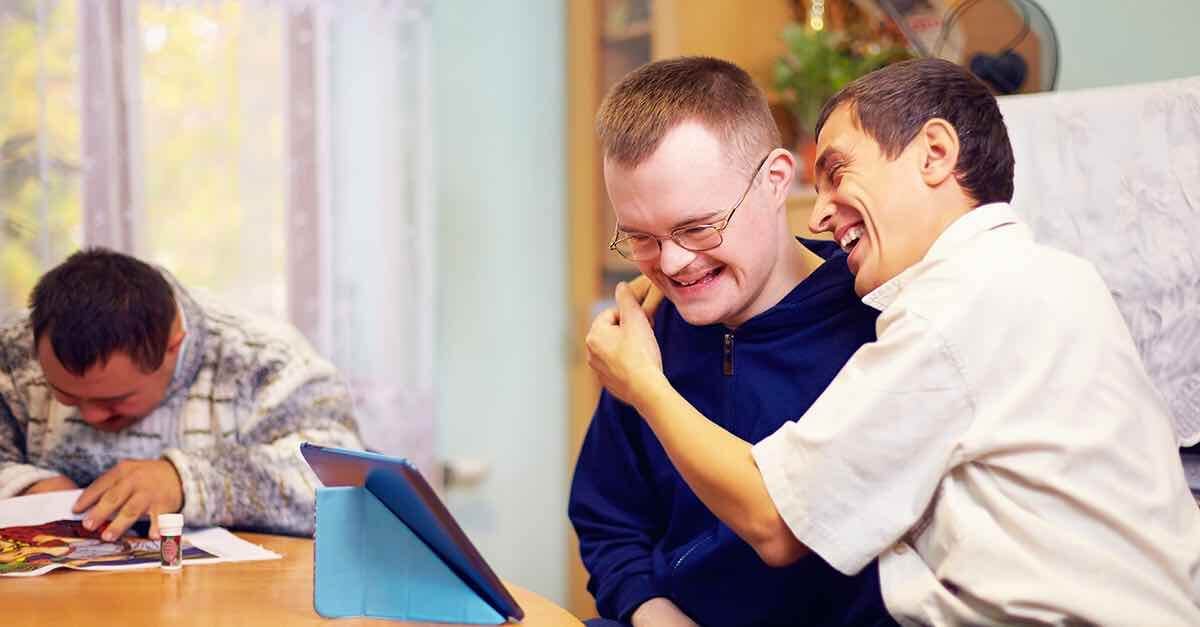Cerebral Palsy & Anger Issues in Adults

Cerebral palsy causes damage to the region of the brain that handles decision-making. This can cause persistent frustration in those living with cerebral palsy that begins in childhood and may worsen into adulthood. While early intervention is the best way to prevent issues, there are steps people can take to improve cerebral palsy and anger issues in adults.
What Causes Anger Issues in Cerebral Palsy Patients?
Cerebral palsy and anger issues in adults is believed to be caused by damage to the basal ganglia.
The basal ganglia consists of a group of cells deep within the brain that are responsible for motor control, emotions, and executive functioning. This is the part of the brain believed to be one of the main decision-processing centers that analyzes all possible actions to choose the “best” one.
Damage to the basal ganglia can cause issues with controlling anger and other emotions. Basal ganglia damage is often associated with athetoid cerebral palsy, but can affect other types of cerebral palsy.
It is believed that 25% of all cerebral palsy patients have behavioral issues. Those most at risk include cerebral palsy patients with epilepsy, intellectual disabilities, and severe pain.
Some of the problem behaviors include:
- Anger issues making conflict likely
- Antisocial behavior
- Anxiousness
- Being headstrong
- Dependency
- Hyperactivity
As cerebral palsy patients move through life, behavioral issues tend to evolve into other challenges:
- Children may experience a strong emotional response to new situations, causing difficulty fitting into their peer groups
- Teenagers may be more likely to develop depression and anxiety disorders
- Adults develop depression and anxiety as they get older and struggle to fit into society
A study published in the Annals of Internal Medicine reports that adults, especially men, with cerebral palsy were more likely to have mental health disorders compared to those without the condition. This can be seen in the following chart.
| Condition | % Adult Men With Cerebral Palsy | % Adult Men Without Cerebral Palsy |
| Schizophrenic disorders | 2.8% | 0.7% |
| Mood affective disorders | 19.5% | 8.1% |
| Anxiety disorders | 19.5% | 11.1% |
| Personality disorders | 1.2% | 0.3% |
Frustration With Quality of Life While Living With Cerebral Palsy
While children may be unaware of their differences, cerebral palsy patients may begin to realize that their physical and speech impairments impact their quality of life as they reach adulthood. This frustration very naturally may lead to cerebral palsy and anger issues in adults.
Although the frustration experienced by those living with cerebral palsy causes substantial damage to quality of life, there is not much data available that could improve the situation for the hundreds of thousands of adults living with the condition.
“Unfortunately, far less is known about the health and clinical care needed to promote healthy aging throughout the adult lifespan for this patient population.”
-Daniel Whitney, Ph.D., Assistant Professor of Physical Medicine and Rehabilitation at Michigan Medicine.
The frustration over quality of life also causes many adults with cerebral palsy to feel that their condition makes them unable to relate to their peers.
Negative Effects of Anger Issues in Cerebral Palsy Adults
Frustration with quality of life in combination with behavioral issues can lead to a number of negative effects. These may include alcoholism and drug use, especially in men.
“We found that adult males with cerebral palsy exhibited higher rates of alcohol and/or opioid-related disorders compared to their male counterparts, whereas women with cerebral palsy did not exhibit higher rates of these disorders compared to their female counterparts.”
-Mark Peterson, Ph.D., M.S., FACSM, Associate Professor of Physical Medicine and Rehabilitation at Michigan Medicine
According to the National Institutes for Health, the social and behavioral problems that cerebral palsy patients experience from childhood through adulthood underline the importance of early intervention.
Improving Behavioral Issues in Cerebral Palsy Adults
Improving behavioral issues in cerebral palsy adults can present a significant challenge for patients and their loved ones.
The combination of biological factors, such as basal ganglia damage, and the psychological factors stemming from a life filled with frustration, can be a tremendous hurdle. As one adult living with cerebral palsy explains it:
“Mostly what I do remember is being overwhelmingly, debilitatingly furious, and frightened by it because I couldn’t stop or control it. It literally felt like someone had switched off my brain, throwing it into an electrical spin as it frantically tried to get back on track.”
However, there are ways to improve behavioral issues, including:
- Behavioral therapy
- Constantly working to stay positive
- Deep breathing
- Self hugging
- Taking a break
While these things are certainly not easy and take time, strength, and commitment, they can be very effective. As another adult living with cerebral palsy says:
“But you should just keep going. Keep looking ahead and know that better days are coming. Keep moving ahead, but do not forget or fear looking back because it is great to see how far you have come. Remind yourself of that on your worst days when you are most frustrated.”
Although intervening as early in life as possible is best, it is never too late to work on improving behavioral issues in cerebral palsy adults. These improvements can lead to a better quality of life for both cerebral palsy patients and their loved ones alike.
